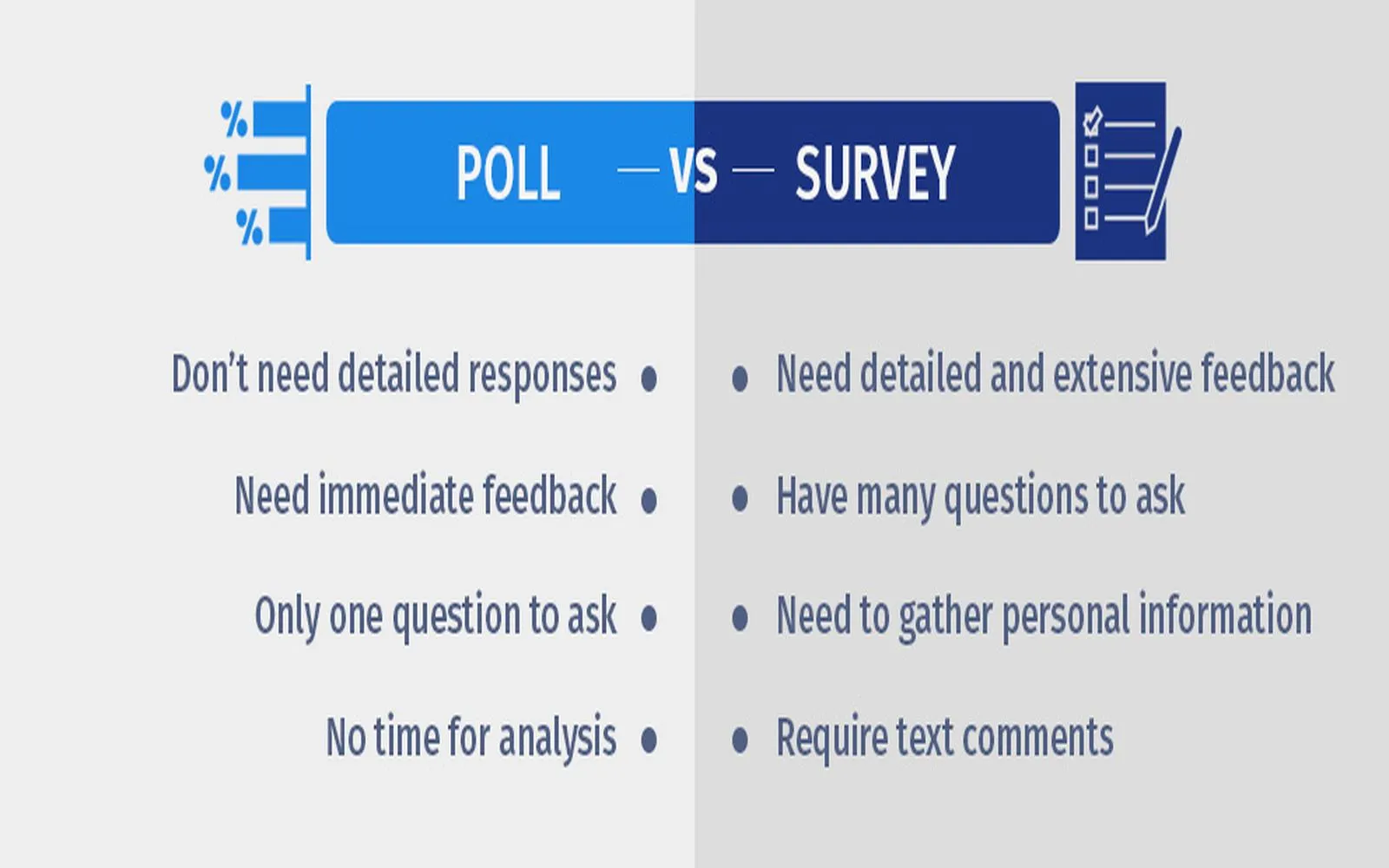Understanding Polls and Surveys
When it comes to gathering information or insights, many people often use the terms "poll" and "survey" interchangeably. However, these two methods serve different purposes and have distinct characteristics. Understanding the differences between a poll and a survey can help you choose the right tool for your needs, whether you're conducting market research, gathering customer feedback, or simply engaging your audience.
Key Differences Between Polls and Surveys
| Criteria | Poll | Survey |
|---|---|---|
| Purpose | To gauge public opinion on a specific topic | To collect detailed information or feedback on various subjects |
| Length | Usually short, often just one question | Typically longer, with multiple questions |
| Complexity | Simple and straightforward | More complex, requiring analysis of data |
| Response Type | Often multiple-choice or yes/no | Varied, including open-ended questions, multiple choice, and rating scales |
| Use Case | Quick insights or trending opinions | In-depth analysis and comprehensive feedback |
As illustrated in the chart above, the main differences between polls and surveys lie in their purpose, length, complexity, response types, and use cases. Understanding these distinctions is crucial for anyone looking to gather data effectively.
How to Run a Poll
Running a poll is relatively straightforward. Here are the steps to consider:
- Define Your Objective: Determine what you want to learn from the poll. This could be gauging public opinion on a new product, a political issue, or even a fun question to engage your audience.
- Choose a Platform: Select a platform that allows you to create and distribute your poll easily. Social media platforms, websites, and dedicated polling tools are excellent options.
- Craft Your Question: Keep it short and clear. A single, focused question is ideal for a poll.
- Distribute the Poll: Share your poll across your chosen platform, encouraging participation from your target audience.
- Analyze the Results: Once the poll has concluded, review the responses to understand the prevailing opinions.
Polls can be particularly useful in real-time marketing strategies or to engage users on platforms like social media, where immediate feedback is valuable.
How to Run a Survey
Conducting a survey requires a more structured approach. Follow these steps to ensure effective data collection:
- Identify Your Goals: Clearly define what information you wish to gather and how it will benefit your organization.
- Choose the Right Tool: Use online survey platforms such as SurveyMonkey, Google Forms, or Typeform for easy creation and distribution.
- Design the Survey: Create a comprehensive set of questions that cover various aspects of the topic. Include a mix of open-ended and closed-ended questions to gather qualitative and quantitative data.
- Test the Survey: Before launching, test the survey on a small audience to identify any issues with question clarity or technical difficulties.
- Distribute the Survey: Share the survey with your target audience through email, social media, or embedded links on your website.
- Analyze the Data: After collecting responses, analyze the data to derive insights that can inform your decisions.
Surveys are particularly effective for in-depth research and understanding customer preferences, making them a vital tool for businesses aiming to enhance their services or products.
When to Use Polls vs. Surveys
Choosing between a poll and a survey largely depends on your objectives:
- Use a Poll: When you need quick feedback on a specific issue, want to engage your audience, or are looking for insight into public opinion.
- Use a Survey: When you need comprehensive data, are interested in exploring various aspects of a topic, or require detailed feedback to inform decisions.
Conclusion
In summary, both polls and surveys are effective tools for gathering information, but they serve different purposes and require different approaches. By understanding the differences and knowing how to run each one, you can ensure that you gather the most relevant insights for your needs. Whether you are using these methods for market research or audience engagement, the right choice will enhance your decision-making process and help you achieve your objectives.





